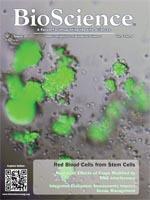The potential hazards posed by RNA interference (RNAi)—based pesticides and genetically modified crops to nontarget organisms include off-target gene silencing, silencing the target gene in unintended organisms, immune stimulation, and saturation of the RNAi machinery. Nontarget organisms will vary in their exposure to small RNAs produced by genetically modified crops, but exposure to insecticidal small RNAs will probably occur at a previously unrealized scale for many. Areas that warrant future work include the persistence of insecticidal small RNAs in the environment, describing crop-based food webs to understand those species that are most exposed, sequencing genomes for species to proactively understand those that may be affected by RNAi, and substantiating that laboratory toxicity testing can accurately predict the field-level effects of this technology. The costs and benefits of pesticidal RNA must be considered relative to current pest management options as pesticidal RNAs move from a theoretical approach to being used as a practical tool.
How to translate text using browser tools
1 August 2013
RNAi-Based Insecticidal Crops: Potential Effects on Nontarget Species
Jonathan G. Lundgren,
Jian J. Duan
ACCESS THE FULL ARTICLE
It is not available for individual sale.
This article is only available to subscribers.
It is not available for individual sale.
It is not available for individual sale.

BioScience
Vol. 63 • No. 8
August 2013
Vol. 63 • No. 8
August 2013
exposure
GM crops
insecticide
nontarget testing
RNAi




